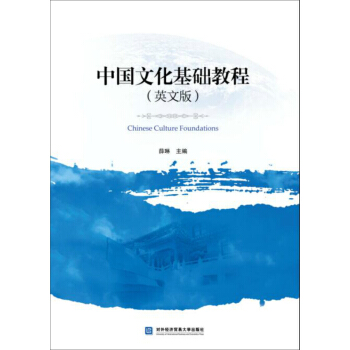

具体描述
内容简介
该教材设计了用英语欣赏国粹、用英语介绍民俗艺术、用英语讲解中国文学、用英语介绍中国饮食文化、用英语介绍中国文化名人等几个主题,采取阅读文本、对话文本多种输入方式,并设计灵活多样、难度等级有致的语言输出练习。
目录
Unit 1 Thoughts and BeliefsPart One Confucian Thoughts
Part Two Taoism Thoughts
Part Three Buddhism Development
Part Four Application
Unit 2 The Quintessence of Chinese Art
Part One Shaolin Kong Fu
Part Two Beijing Opera
Part Three Chinese Sculpture
Part Four Chinese Painting
Part Five Chinese Calligraphy
Part Six Embroidery in China
Part Seven Application
Unit 3 Classic Stories
Part One History Stories in China
Part Two Myths Stories in China
Part Three Chinese Idioms Stories
Part Four Folk Tales in China
Part Five Chinese Fables
Part Six Application
Unit 4 Chinese Language and Chinese Characters
Part One Chinese Proverbs and Sayings
Part Two Chinese Enigmatic Folk Similes
Part Three The Art of Humor in Chinese
Part Four Name Culture
Part Five Euphemisms in Chinese Language
Part Six Chinese Characters
Part Seven Application
Unit 5 Chinese Cuisine
Part One Tea Culture
Part Two Wine Culture
Part Three Chinese Cuisine
Part Four Application
Unit 6 Ancient Chinese Literature
Part One The Book of Songs and Songs of Chu
Part Two Hen Fu
Part Three Tang Poetry
Part Four Song Poetry
Part Five Yuan Opera
Part Six Novels of Ming and Qing Dynasties
Part Seven Application
Unit 7 Chinese FolkArt
Part One Chinese Folk Music
Part Two Chinese Folk Dance
Part Three Xiangsheng
Part Four Pingshu
Part Five Acrobatics
Part Six Application
Unit 8 Chinese Cultural Celebrities
Part One Political Leaders
Part Two Political Talents and Pioneers
Part Three Literary Figures
Part Four Application
Unit 9 Clothing and Accessories in Ancient China
Part One Chinese Traditional Dress and Accessories in Ancient Time
Part Two Tokens of Love for Ancient Chinese Maidens
Part Three The Fine Embroidery and Intricate Silver Ornamentation of Miao Ethnic Minority
Part Four Application
Unit 10 Science hnd Technology in Ancient China
Part One Four Great Inventions
Part Two Guo Shoujing and His Improved Calendar
Part Three Li Bing and His Dujiang Weir
Part Four Traditional Chinese Medicine
Part Five Application
References
Keys
精彩书摘
《中国文化基础教程(英文版)》:Cao Cao, whose literary name was Mengde, was born to a powerful court official's family in Anhui Province.As a child, he grew very fond ofpoetry, history and books on the art of war.And through constant practice on horseback and in archery, he excelled in martial arts too, When he grew up, he became an official of the court.
During the last years of the Eastem Han Dynasty, Emperor Xiandi was obliged to leave the capital of Chang'an and take refuge at Luoyang due to the fighting among powerful military commanders.Cao Cao was relatively weak in military terms at that time, but he was shrewd enough to take advantage of the opportunity to invite the emperor to come to Xuchang which was his domain.Naturally, his town became the provisional capital of the Eastern Han Dynasty.
Then, Cao Cao began issuing orders in the name of Emperor Xiandi, and gradually expanded his own military strength and sphere of influence.Besides, by cutting taxes and launching water conservancy projects, Cao Cao encouraged the farmers to develop production and successfully solved the problem of food supply.His power grew mightier and mightier,and finally he succeeded in unifying north China and establishing his own regime, the Kingdom of Wei.
……
用户评价
自从我开始阅读《中国文化基础教程(英文版)》,我的视野似乎被打开了,看到了一个我从未如此清晰认识过的中国。这本书最令我赞赏的一点是,它没有回避中国文化中的复杂性和多面性。例如,在介绍中国古代政治思想时,作者并没有简单地赞美其辉煌,而是也提及了其局限性和对后世的影响,这使得整个叙述更加客观和深刻。我特别喜欢关于中国哲学思想中“辩证法”的探讨,作者通过对《易经》等典籍的解读,展现了中国人看待事物发展变化的独特视角,以及“阴阳相生相克”如何影响了中国人的思维模式。这种对思想深度的挖掘,让我对中国文化的理解不再停留在表面,而是能够触及到其思想的根基。书中还对中国传统医学的“气”和“脉”等概念进行了详细的解释,并将其与中国人的养生观念联系起来,让我对中国人独特的健康哲学有了更直观的认识。我甚至觉得,这本书就像一部精心编排的交响乐,各个章节之间相互呼应,共同奏响了一曲宏伟的中国文化乐章,让我沉醉其中,久久不能忘怀。
评分这本《中国文化基础教程(英文版)》就像一个精心策划的博物馆导览,带领我一步步走进中国文化的殿堂。我尤其喜欢它对中国民间艺术和传统手工艺的介绍。无论是剪纸的精巧,还是陶瓷的温润,抑或是刺绣的细腻,书中都用详实的文字和精美的图片,展现了中国人民丰富的创造力和精湛的技艺。作者在介绍这些艺术形式时,不仅仅描述了它们的外观,更重要的是挖掘了它们背后的文化意义和象征,以及它们如何在中国人的日常生活中扮演着重要的角色。我记得在阅读关于中国结的章节时,作者详细解释了不同绳结的含义,以及它们在中国人表达祝福和寓意时的重要性。这种对细节的关注,让我觉得这本书不仅仅是一本教科书,更是一本充满人情味的文化读物。书中还对中国传统戏曲,如京剧、昆曲等进行了生动的描述,让我得以窥见中国传统戏剧的艺术魅力,包括其独特的表演形式、妆容服饰和音乐唱腔。我甚至觉得,阅读这本书就像在品味一道道精心烹制的文化佳肴,每一口都充满了惊喜和回味。
评分坦白讲,我曾经认为中国的文化可能过于复杂,难以在短时间内掌握,但这本书的出现彻底打消了我的疑虑。它就像一位循循善诱的老师,将中国文化的精髓娓娓道来,让我倍感轻松和愉悦。我特别欣赏书中对中国传统节日及其背后故事的阐述。从春节的喜庆祥和,到中秋的团圆思念,再到端午的纪念屈原,每一个节日都被赋予了深厚的文化内涵。作者不仅仅是简单地描述节日习俗,更是深入挖掘了这些习俗的起源、演变以及它们在中国人心目中的意义。我记得在阅读关于春节的部分时,作者详细解释了“年”的传说,以及为什么中国人会在春节期间贴春联、放鞭炮、吃年夜饭。这些细节让我对这个世界上最大的节日有了更全面的理解,也感受到了中国人对于家庭团聚和新年祝福的深切情感。此外,书中对中国四大发明(造纸术、指南针、火药、印刷术)的介绍也让我印象深刻。作者不仅讲述了这些发明的历史意义,还探讨了它们如何改变了世界历史进程,让我从更宏观的角度认识到中国古代文明对世界的贡献。这本书的优点在于,它始终保持着一种对话的姿态,仿佛在与读者交流,引导读者去思考和感悟,而不是简单地灌输知识。这种互动式的阅读体验,让学习过程充满乐趣。
评分我必须承认,我最初对这本书的期望值并不高,以为会是一本枯燥的教科书,但它却给了我巨大的惊喜。这本书的结构非常清晰,每一章节都围绕一个特定的文化主题展开,逻辑性很强,让我能够轻松地跟随作者的思路。我特别喜欢书中对中国古代哲学思想中“和谐”观念的阐释。作者通过分析儒家、道家等学派的思想,深入浅出地解释了“天人合一”、“和而不同”等理念,并探讨了这些理念如何在中国人的生活、社会交往和自然观中得到体现。书中引用了大量的历史文献和文学作品作为佐证,使得论述更加有力,也让我对中国文化的深层价值有了更深刻的理解。此外,我对书中关于中国传统价值观的介绍也印象深刻,比如孝道、忠诚、礼仪等,以及它们如何塑造了中国人的道德观念和行为规范。作者在分析这些价值观时,并没有进行简单的道德评判,而是将其置于历史和社会背景下进行解读,让我能够更客观地认识它们的形成和演变。这本书的叙述方式非常流畅,没有生硬的理论堆砌,而是将知识融入到生动的叙述之中,让我感到阅读的过程是一种享受。
评分我必须坦诚地说,在阅读《中国文化基础教程(英文版)》之前,我对中国文化的理解非常有限,甚至有些刻板印象。但这本书彻底改变了我的看法。它以一种非常包容和多元的视角,展现了中国文化的丰富性和复杂性。我特别欣赏书中对中国地域文化的介绍。作者并没有将中国文化看作是一个单一的整体,而是详细阐述了不同地域在语言、习俗、饮食、艺术等方面存在的差异,以及这些差异如何共同构成了丰富多彩的中国文化。例如,书中对川菜的麻辣鲜香,粤菜的清淡精致,以及北方菜的浓油赤酱的描述,都让我对中国饮食的多样性有了更深刻的认识。此外,书中对中国少数民族文化的介绍也让我大开眼界,了解了他们独特的语言、服饰、节日和宗教信仰,让我感受到中华文明的包容和多元。这本书的优点在于,它能够打破西方读者对中国的刻板印象,展现一个更加真实、立体和鲜活的中国,让我对这个国家产生了前所未有的好奇和好感。
评分我必须说,这本书的编写方式简直是为我这样的零基础英语学习者量身定做的!作为一名对中国文化充满浓厚兴趣的外国学生,我一直觉得很多介绍中国的书籍要么过于学术化,要么语言过于生涩,让我望而却步。但《中国文化基础教程(英文版)》完全颠覆了我的认知。首先,它的语言表达非常地道且易于理解,即使是对于非母语读者,也几乎没有阅读障碍。作者在遣词造句上非常讲究,避免了冗长复杂的句子结构,而是用清晰明了的语言来阐述复杂的文化概念。更重要的是,书中对于中国文化的解释,总是能够考虑到西方读者的思维习惯和文化背景。比如,在介绍中国人的家庭观念时,作者并没有直接套用中国的传统说法,而是通过对比西方社会的家庭结构和价值观,来帮助读者理解中国家庭在中国社会中的重要性以及其演变。这种“换位思考”式的讲解,极大地减少了文化隔阂,让我能够更轻松地接受和理解。书中还穿插了许多生动的插图和照片,这些视觉元素不仅仅是装饰,更是对文字内容的有力补充,让我能够更直观地感受到中国文化的魅力。我特别喜欢关于中国饮食文化的章节,那些精美的菜肴图片,搭配详细的食材介绍和烹饪方式的阐述,简直让人口水直流,也让我对中国菜的博大精深有了更深刻的认识。这本书的每一个细节都体现了作者的用心,让我觉得物超所值。
评分说实话,我对这类文化类书籍的要求很高,《中国文化基础教程(英文版)》完全超出了我的预期。它在内容上不仅广博,而且深入。我尤其喜欢书中对中国古代科技的介绍。作者不仅仅是列举了“四大发明”,而是深入探讨了这些发明在当时的历史条件下是如何产生的,它们如何促进了中国社会的发展,以及它们对世界文明产生的深远影响。例如,在介绍造纸术时,作者详细描述了蔡伦改进造纸术的过程,以及纸张的普及如何极大地促进了文化传播和知识的积累。这种对科技发展背后历史背景和深远影响的挖掘,让我对中国古代的智慧有了更深的敬意。书中还对中国古代的航海技术,如指南针的应用,以及天文、数学等领域的发展进行了详细的介绍,让我得以窥见中国古代文明在科学技术领域的辉煌成就。这本书的优点在于,它能够将枯燥的科技史实,通过生动的叙述和翔实的史料,转化为引人入胜的故事,让我觉得学习历史知识也是一件充满乐趣的事情。
评分作为一个对中国历史和哲学有着濃厚兴趣的外国学者,我一直渴望找到一本能够全面且深入介绍中国文化核心的英文书籍。很高兴我找到了《中国文化基础教程(英文版)》。这本书在内容上的深度和广度都令我惊叹。它不仅仅停留在表面介绍,而是深入剖析了中国哲学思想的根本,比如“天人合一”、“阴阳五行”等概念,并解释了它们如何渗透到中国人的宇宙观、人生观乃至社会伦理中。作者对这些复杂哲学思想的阐释,既保持了学术的严谨性,又运用了大量生动的例子,使得这些原本可能令人望而生畏的概念,变得清晰易懂。我尤其欣赏书中对中国古代政治制度的探讨,它如何影响了中国的历史发展,以及对现代中国社会仍然存在的痕迹。书中对中国古代社会结构的分析,比如士农工商的等级划分,以及家族观念在中国社会中的根深蒂固,都让我对中国社会的运作方式有了更深层次的理解。此外,对中国传统医学的介绍也让我大开眼界,认识到其博大精深的理论体系和独特的治疗方法。这本书的学术价值和可读性都达到了一个很高的水平,对于深入了解中国文化,绝对是一部不可多得的佳作。
评分这本书的语言表达力堪称一绝!作者仿佛是一位经验丰富的导游,用通俗易懂的语言,带领我领略中国文化的壮丽风光。我尤其被书中对中国山水画的介绍所吸引。作者不仅仅是描述了画面的意境,更是深入探讨了中国山水画背后所蕴含的哲学思想,比如“天人合一”的理念,以及画家如何通过笔墨来表达对自然的敬畏和对宇宙的感悟。那些精美的山水画插图,配合作者的讲解,让我仿佛置身于中国壮丽的山河之中,感受着大自然的鬼斧神工。书中还对中国古典诗歌进行了详细的解读,无论是李白的豪放,杜甫的沉郁,还是白居易的通俗,都得到了精彩的阐释,让我得以领略中国诗歌的独特魅力和深厚意境。我常常会一边阅读,一边在脑海中回味那些优美的诗句,那种感觉妙不可言。这本书的优点在于,它能够将复杂的文化概念,通过生动的语言和具体的例子,转化为普通读者能够理解和欣赏的内容,让我觉得学习中国文化是一件如此有趣的事情。
评分这本书简直就是我打开中国文化大门的一把金钥匙!一直以来,我对中国这个拥有悠久历史和深厚底蕴的国度充满好奇,但苦于没有系统性的入门读物,总是在碎片化的信息中打转。偶然间看到了《中国文化基础教程(英文版)》,毫不犹豫地入手了。拿到书的那一刻,就被它精致的设计和清晰的排版所吸引。内容方面,它并非简单地罗列事实,而是以一种非常引人入胜的方式,将中国文化的方方面面徐徐展开。从古代哲学思想的源头,如儒家、道家、法家等,到它们如何深刻影响了中国人的思维方式和行为准则,都讲解得鞭辟入里。我尤其喜欢作者在讲解这些抽象概念时,能够巧妙地结合历史典故和人物故事,让枯燥的理论变得生动有趣,仿佛亲身经历了那个时代。比如,在介绍“仁”的概念时,作者不仅仅停留在字面解释,而是深入挖掘了孔子及其弟子的思想,以及“仁”在不同历史时期如何被解读和实践。这种深入浅出的讲解方式,让我能够真正理解这些思想的精髓,而不是停留在表面。此外,书中对中国古代文学、艺术、建筑、节日习俗等方面的介绍也十分详尽,无论是唐诗宋词的韵味,还是水墨画的意境,或是园林建筑的巧思,都能让人感受到中国文化的独特魅力。每一章节都像是一次精心策划的文化之旅,让我沉浸其中,流连忘返。我常常会一边阅读,一边在脑海中勾勒出书中所描绘的画面,那种感觉非常奇妙。这本书不仅满足了我对中国文化的求知欲,更激发了我进一步探索的兴趣。
相关图书
本站所有内容均为互联网搜索引擎提供的公开搜索信息,本站不存储任何数据与内容,任何内容与数据均与本站无关,如有需要请联系相关搜索引擎包括但不限于百度,google,bing,sogou 等,本站所有链接都为正版商品购买链接。
© 2025 windowsfront.com All Rights Reserved. 静流书站 版权所有

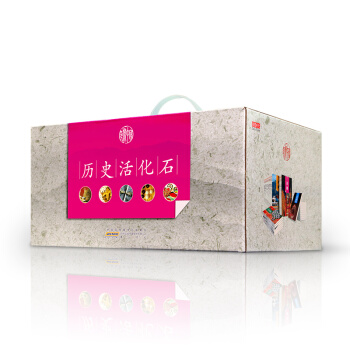
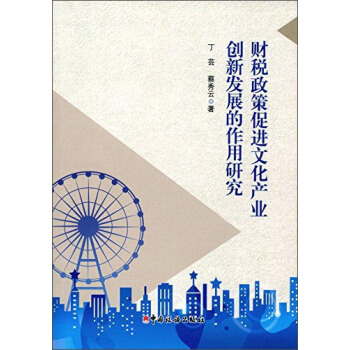
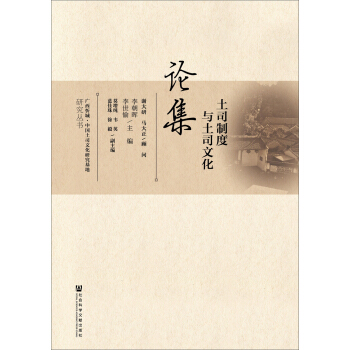
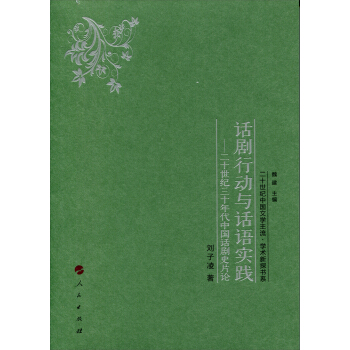
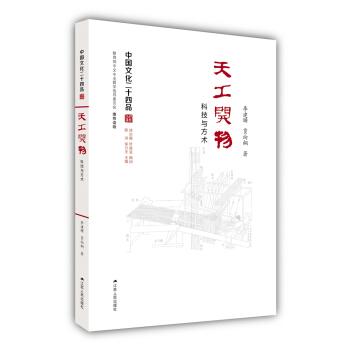
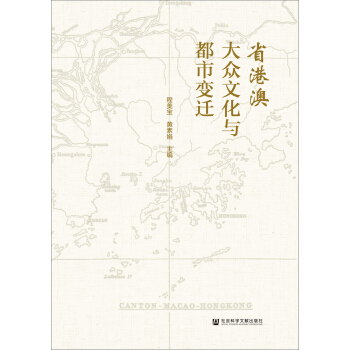


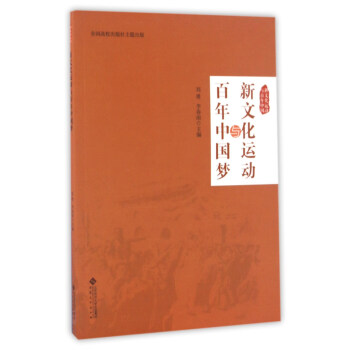
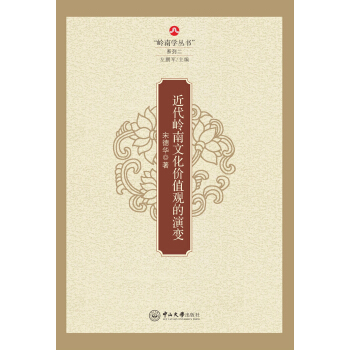
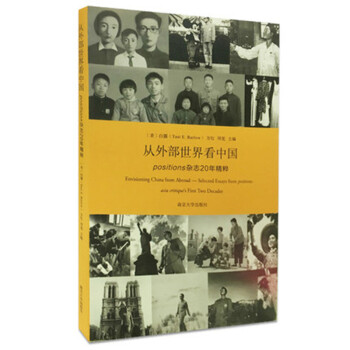


![创意产业园区区域协同机理研究/海派时尚与创意经济系列丛书 [The Research Regional Synergetis Mechanism Of Creative Industry Park] pdf epub mobi 电子书 下载](https://pic.windowsfront.com/12057632/58245346Nd181a915.jpg)
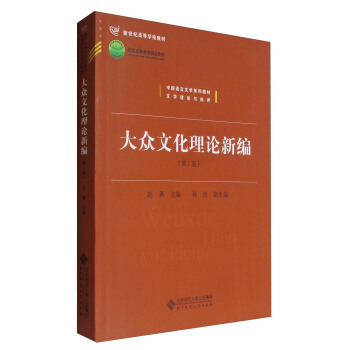
![体验世界文化之旅阅读文库:智利 [Chile-Culture Smart!] pdf epub mobi 电子书 下载](https://pic.windowsfront.com/12058247/58d87e51N35b846af.jpg)
![体验世界文化之旅阅读文库:博茨瓦纳 [Culture Smart!Botswana] pdf epub mobi 电子书 下载](https://pic.windowsfront.com/12058249/58d87e51N768c1333.jpg)
![体验世界文化之旅阅读文库:摩洛哥 [Morocco-Culture Smart!] pdf epub mobi 电子书 下载](https://pic.windowsfront.com/12058273/58e5e5ccNfa942022.jpg)
![体验世界文化之旅阅读文库:印度 [Culture Smart!India] pdf epub mobi 电子书 下载](https://pic.windowsfront.com/12058279/58d87e51N7eac73e0.jpg)
